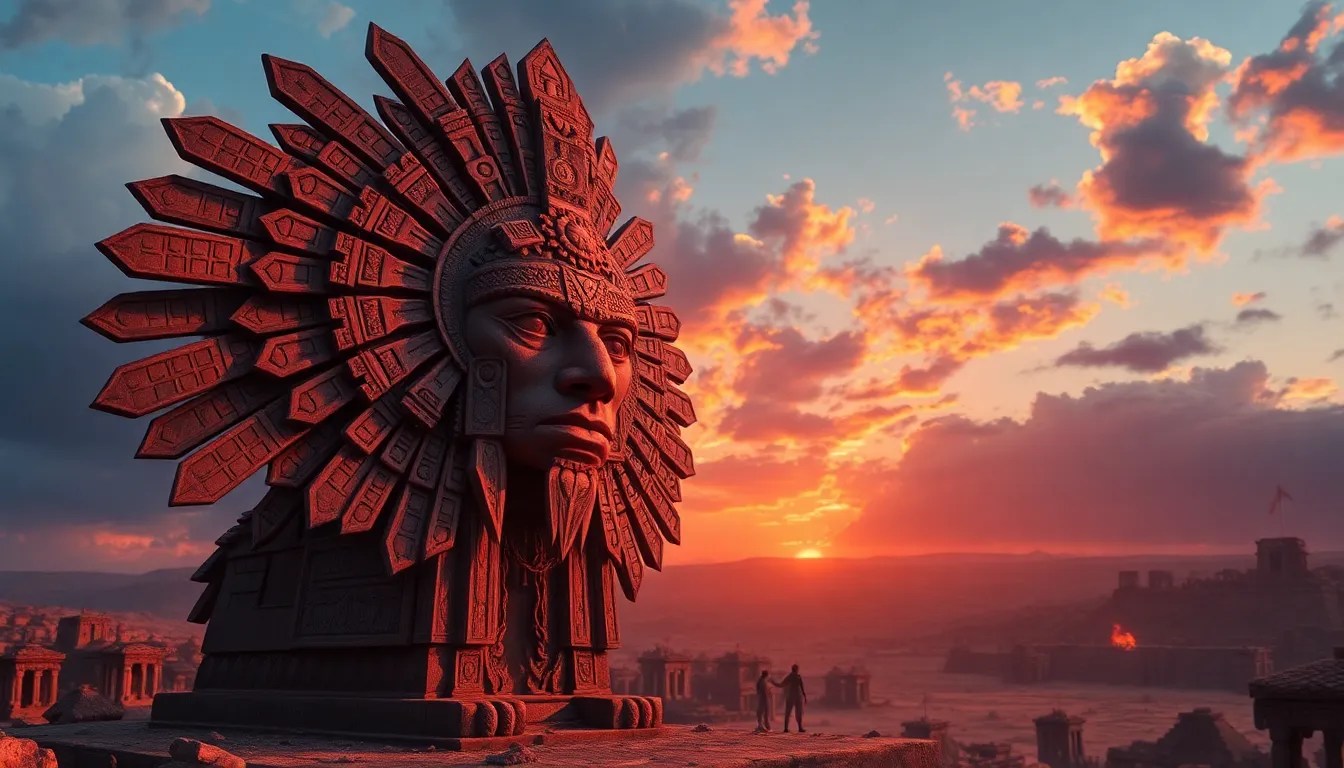Aztec Views on Leadership: A Philosophical Examination
I. Introduction
The Aztec civilization, which flourished in Mesoamerica from the 14th to the 16th centuries, is renowned for its rich cultural heritage, advanced agricultural practices, and complex societal structures. At the heart of this remarkable civilization lay a profound understanding of leadership, which played a crucial role in maintaining social order and fostering community cohesion.
In Aztec society, leadership was not merely a position of power; it was a philosophical and moral obligation. Leaders were expected to embody the values of their civilization and guide their people through both prosperous and challenging times. This article aims to explore the philosophical perspectives on leadership within the Aztec worldview, examining the characteristics of leaders, the influence of spiritual beliefs, and the societal structures that shaped their roles.
II. Key Characteristics of Aztec Leaders
Aztec leaders were revered not only for their authority but also for the qualities they exhibited. The following characteristics were admired in their leaders:
- Wisdom: Leaders were expected to possess deep knowledge and understanding of both the world and their people.
- Courage: Bravery was essential, particularly in times of war or crisis, as leaders were the first to face challenges.
- Humility: Despite their elevated status, effective leaders demonstrated humility, recognizing that their power was a responsibility.
Moreover, military prowess and strategic thinking were vital components of effective leadership. Leaders had to be adept in warfare, capable of making swift decisions that could alter the course of battles and, by extension, the fate of their city-states.
Equally important was the spiritual and moral integrity of leaders. Aztec leaders were seen as intermediaries between the gods and the people, and their ability to uphold moral standards was paramount in maintaining societal harmony.
III. The Concept of Teotl and Leadership
Central to Aztec philosophy is the concept of Teotl, which can be understood as the divine essence or sacred force that permeates the universe. This concept significantly influenced the expectations placed upon leaders:
- Definition of Teotl: Teotl represents the dynamic, ever-changing nature of existence and the interconnectedness of all life.
- Influence on Leadership: Leaders were expected to embody Teotl by demonstrating adaptability, resilience, and a commitment to the greater good.
- Interconnectedness: Leadership roles were viewed as an extension of divine will, where leaders acted in accordance with cosmic principles.
This philosophical framework positioned leaders as not only rulers but also as stewards of the divine order, responsible for ensuring the balance between the human and the divine.
IV. The Role of Education and Knowledge
Education was fundamental in shaping effective leaders within Aztec society. The Aztecs established specific schools to cultivate leadership skills:
- Calmecac: This institution was designed for the education of noble children, focusing on theology, philosophy, and the arts.
- Telpochcalli: A school for commoners, where students learned about history, warfare, and practical skills necessary for everyday life.
Knowledge was viewed as a form of power, and leaders were expected to wield this power responsibly. The rigorous education system ensured that leaders were well-prepared to navigate the complexities of governance and societal needs.
V. Leadership in Governance and Society
The governance structure of the Aztec Empire was complex, with leaders occupying various roles within the hierarchy. Key aspects of this structure included:
- Role of Leaders: Leaders were responsible for making decisions that affected the welfare of their communities, often consulting with advisors and elders.
- Balance of Power: Leadership was not solely in the hands of military leaders; priests and warriors also held significant influence, creating a system of checks and balances.
- Collective Leadership: The Aztec system often emphasized collective decision-making, where the consensus was sought rather than unilateral authority.
This multifaceted approach to leadership allowed the Aztecs to address diverse challenges and maintain social cohesion.
VI. Rituals and Symbolism Related to Leadership
Rituals played a crucial role in legitimizing authority within Aztec society. The following elements illustrate the significance of rituals:
- Legitimization of Authority: Ceremonies were conducted to affirm a leader’s divine right to rule, reinforcing their position in the eyes of the populace.
- Symbolism in Art: Aztec art often depicted leaders with symbols of power and divinity, such as feathered headdresses and intricate jewelry, signifying their elevated status.
- Ceremonial Practices: Regular rituals, including sacrifices and festivals, were essential in maintaining the favor of the gods and ensuring societal stability.
These practices not only reinforced the leaders’ authority but also fostered a sense of unity among the people.
VII. Challenges and Responsibilities of Leadership
The role of a leader in Aztec society was fraught with challenges and responsibilities. Key challenges included:
- Burden of Leadership: Leaders were expected to make difficult decisions, especially during crises, often facing immense pressure from both their peers and the populace.
- Ethical Dilemmas: Leaders frequently encountered moral dilemmas, particularly in warfare and sacrifices, where the balance between duty and ethics was tested.
- Expectations of Accountability: The populace held leaders to high standards, expecting them to be accountable for their actions and decisions.
These challenges underscored the weight of leadership and the necessity for integrity and wisdom.
VIII. Conclusion
In summary, the Aztec views on leadership encompass a rich tapestry of philosophical insights, where wisdom, courage, and humility are paramount. The interplay of Teotl, education, and societal structures further illustrates the complexity of leadership roles within this fascinating civilization.
As contemporary society grapples with the nature of leadership, the principles derived from Aztec philosophy remain relevant, reminding us of the enduring significance of ethical governance and collective responsibility.
Ultimately, the philosophical legacy of Aztec leadership principles offers valuable lessons for today’s leaders, emphasizing the importance of integrity, knowledge, and a commitment to the greater good.



